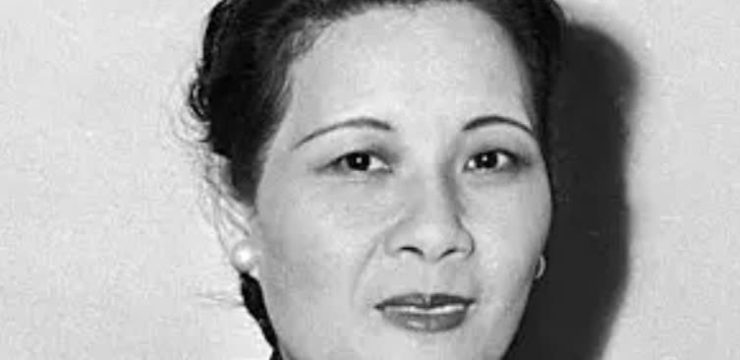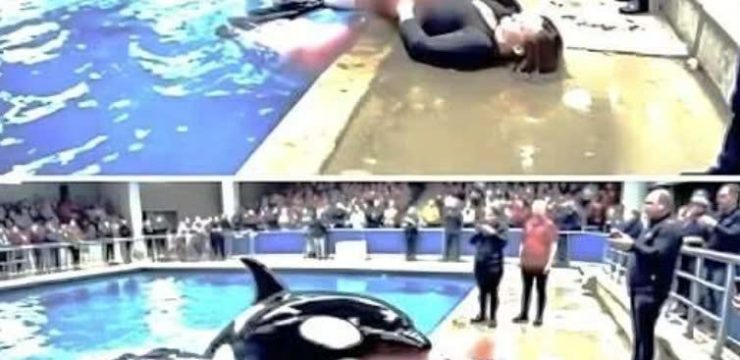In a historic moment at the European Figure Skating Championships in Finland, Minna-Maaria Antikainen, the world’s first transgender figure skater, captivated audiences with a debut that has sparked global discussions. During the opening ceremony, Antikainen’s performance was marked by an unexpected fall, a moment that has since gone viral and ignited conversations about inclusivity and progress within the traditionally conservative world of figure skating.

Minna-Maaria Antikainen, formerly known as Markku-Pekka Antikainen, is a 57-year-old farm owner from Siilinjarvi, Finland. Embracing figure skating at the age of 49, Antikainen’s journey into the sport is remarkable. This year’s championship saw the Finnish Figure Skating Association granting Antikainen a solo performance during the opening ceremony. The act was a deliberate choice to champion diversity, equality, and inclusion, aligning with the event’s theme, “Just Be You.”
However, as Antikainen began the routine, nerves seemed to take over. Moments after stepping onto the ice, a novice stumble resulted in a fall, disrupting the performance. Despite this setback, the moment turned into one of resilience and support. A female hostess carrying the Finnish flag quickly rushed to Antikainen’s side, assisting them in recovering and completing the routine. While unplanned, the fall became a powerful symbol of determination and community support, resonating with viewers both in the arena and online.
Antikainen’s story is one of passion and persistence. According to Finnish news outlets, Antikainen identifies as a gender-neutral woman and has openly shared their personal journey into figure skating. Reduxx Magazine, a platform focused on safeguarding women and children, reported that Antikainen once dreamed of becoming an “ice princess” as a child. Despite starting figure skating later in life, Antikainen’s dedication is clear. Leading up to the championship, they committed to five hours of on-ice practice each week and participated in various domestic and international competitions, showcasing a steadfast commitment to the sport.
The opening ceremony served as more than just a platform for performances—it was a statement on inclusivity in figure skating. The theme, “Just Be You,” aimed to promote acceptance and celebrate diversity within the sport. However, it also reignited debates about figure skating’s long-standing traditional structures, particularly its rules regarding gender roles. One significant point of contention is the prohibition of same-sex pairs in international competitions. Current regulations strictly define pairs as male and female, leaving no space for non-binary skaters or same-sex partnerships.
Outi Wuorenheimo, Executive Director of the Finnish Figure Skating Association, highlighted the challenges of breaking down these traditional barriers. Wuorenheimo acknowledged the conservative nature of figure skating and the many rules that govern it. She expressed hope for a global shift toward greater inclusivity, emphasizing the need to evolve and adapt to changing societal values. Wuorenheimo’s sentiments reflect a growing push within the sport to create space for athletes of all genders and backgrounds.
While Antikainen’s stumble during the performance could be seen as a minor mishap, it has become a focal point for broader conversations about representation and equality. The incident highlights the challenges faced by athletes who push boundaries and redefine norms in their respective fields. It also serves as a reminder of the courage required to step into the spotlight as a trailblazer.
The video of Antikainen’s performance quickly spread across social media, eliciting a range of reactions. Many praised their bravery and determination, while others used the moment to reflect on the importance of creating a more inclusive and supportive environment in sports. The response underscores the complexities of breaking new ground in any field, where moments of vulnerability often pave the way for meaningful change.
The “Just Be You” theme was not just a slogan—it was a call to action for the figure skating community. Antikainen’s performance embodied the spirit of this message, showing that inclusion isn’t just about policies or representation but about creating an environment where everyone feels seen and valued. Despite the fall, Antikainen’s performance was a triumph, sparking a much-needed dialogue about how the sport can become more welcoming to athletes from all walks of life.
As the sport continues to grapple with its traditions, Antikainen’s debut serves as a catalyst for change. It challenges stakeholders to reconsider outdated practices and explore new ways to ensure equality for all participants. Whether through introducing categories for non-binary athletes or allowing same-sex pairs, the future of figure skating must prioritize diversity and inclusivity.
Antikainen’s fall may have been a fleeting moment, but its impact is profound. It has ignited conversations that extend far beyond the rink, touching on broader issues of acceptance and equality. More importantly, it serves as a testament to the power of perseverance and the courage it takes to be the first. In doing so, Antikainen has not only left their mark on the sport but also inspired others to follow in their footsteps, making figure skating—and the world—a more inclusive place.





